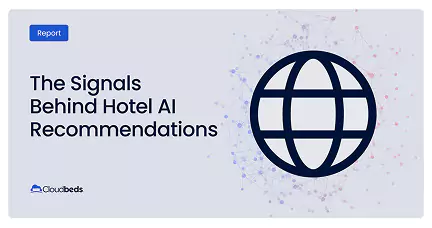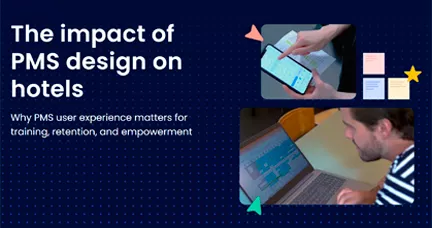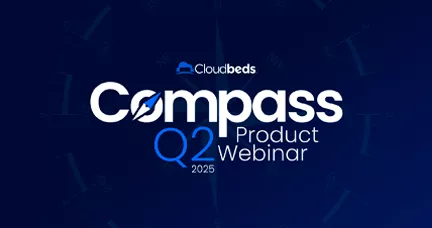Hotel teams aren’t lacking data, but many are unable to make sense of all of it. Too often, their focus is on KPIs that were designed for a different era.
Hotel teams aren’t lacking data, but many are unable to make sense of all of it. Too often, their focus is on KPIs that were designed for a different era.
Metrics like occupancy, ADR, and RevPAR are still important, but when viewed in isolation or prioritized without context, they can paint an incomplete picture of performance and lead to decisions that quietly chip away at profitability.
Hotel managers, specifically revenue and marketing managers, need to start looking at these metrics through a new lens that centers on total profitability, long-term customer value, and cross-departmental collaboration.
Here’s how some of the most commonly used metrics can mislead when not connected to the bigger picture:
- RevPAR (revenue per available room): One of the most useful benchmarks, especially for comparing against compsets, but excludes non-room revenue and hides the costs behind the revenue. A high RevPAR doesn’t always mean high profits.
- Occupancy rate: Tells you how many rooms are filled, but not the revenue or profit they generate. Rooms sold at low rates during off-peak periods for the sake of occupancy can reduce overall profitability.
- Channel volume: Reflects how many bookings a channel generates, but not the margins after fees.
- CPA (cost per acquisition): A lower CPA is generally good, but it’s not always better if it brings in low-spending guests. A higher CPA might deliver stronger revenue and better ROI.
- ADR (average daily rate): A higher ADR is typically better, but on its own it doesn’t say much about profits. It must be evaluated alongside occupancy, discounts on upgrades, upsell performance, and distribution costs.
- ROAS (return on ad spend): Useful in theory, but performance can be overstated due to wrong attribution, especially if cancellations aren’t factored in or when credit is given to the last ad seen, despite multiple earlier touchpoints.
8 metrics for modern commercial teams
These eight metrics build on classic KPIs like RevPAR and ADR, giving commercial teams a clearer view of what’s working, where to invest, and how to grow more profitably.
1. Campaign/channel revenue attribution
You can’t optimize what you can’t track. Campaign and channel revenue attribution tracks how much revenue each campaign or channel generates, helping evaluate marketing effectiveness and optimize budget allocation.
For commercial teams, this insight is critical. It’s how marketers justify spend, how revenue managers forecast demand by segment, and how both teams decide what to double down on next.
Proper attribution requires more than just UTM tags and discount codes — it depends on having the right integrations in place. When your PMS and CRM are connected, every booking and onsite purchase can be tied back to the original source. That means F&B, spa, and even retail spend can be tracked against the campaign or platform that brought the guest in.
Example: A limited-time campaign targeting past guests with a loyalty promo drove fewer bookings than a broad Google Ads campaign targeting new audiences. But attribution revealed that the loyalty campaign had 30% higher total revenue per booking and double the upsell conversion rate.
2. Revenue per acquisition (RPA)
RPA measures total revenue (room plus ancillary spend) from each newly acquired guest during their first stay.
For commercial teams, this is where marketing meets revenue strategy. RPA gives you a clear read on whether your acquisition efforts are bringing in guests who actually spend, not just those who convert. It helps marketers defend higher CPAs when justified, and it gives revenue teams insight into which offers or campaigns attract the most valuable first-timers.
- Commercial teams use RPA to:
- Segment high RPA guests for loyalty or reactivation campaigns
- Guide budget allocation across paid channels and campaigns
- Compare short-term value across different segments
3. Channel/campaign contribution margin
Top-line revenue is great, but it doesn’t tell the full story. Contribution margin reveals how much profit your hotel keeps after all related costs are subtracted.
This metric helps commercial teams compare campaigns and channels based not just on what they generate, but on what they return. It accounts for OTA commissions, advertising costs, loyalty discounts, and even technology fees tied to each booking source. That makes it one of the most honest metrics in your commercial toolkit.
Example: A direct booking may generate €200 in revenue with €10 in costs, while an OTA booking generates €220 but costs €50. The first is clearly more profitable.
4. Channel profitability index
Once you have the contribution margins of your channels, you can benchmark and rank them using a channel profitability index. This allows you to:
- Prioritize high-performing channels
- Improve or eliminate low-margin ones
- Adjust your mix seasonally based on ROI
Used consistently, CPI helps commercial teams stay proactive when managing distribution.
5. NRevPAR
Building on RevPAR, NRevPAR (Net Revenue per Available Room) subtracts acquisition costs to reflect true room profitability. For example, if your hotel achieves a high ADR thanks to high-commission OTAs, your RevPAR might look strong. But after subtracting acquisition costs, your NRevPAR may be lower than if you had sold more rooms through lower-cost direct channels.
How to improve NRevPAR:
- Shift repeat guests from OTAs to direct channels
- Monitor PPC spend on search and metasearch engines
- Avoid deep-discount promotions with high commissions just to increase occupancy
6. TRevPOR
TRevPOR (Total revenue per occupied room) captures all guest revenue—room and non-room—divided by occupied rooms. It’s especially relevant for full-service properties with outlets like restaurants, spas, or golf courses. It reflects how much each guest contributes across the property.
While it doesn’t indicate profitability (high TRevPOR with too low occupancy means you’re probably not profitable), it does show how effectively your property generates revenue from each guest. It also helps evaluate displacement by comparing total revenue from corporate groups (typically lower ADR but higher ancillary spend) versus transient guests (typically higher ADR but possibly less spend on services).
Example: Two guests book the same room type. One grabs breakfast, hits the spa, and shops at the boutique. The other just stays the night. ADR is identical, but TRevPOR reveals which guest is truly more valuable — and helps teams build more like them.
To track it, integrate POS data with your PMS and tie purchases to each guest’s stay.
7. CLV
Customer lifetime value indicates the long-term profitability of a guest by calculating gross contribution minus marketing and acquisition costs. CLV doesn’t only depend on how much guests spend, but also on how often they stay at your hotel.
CLV is peculiar among metrics because it’s part historical profit analysis, part future earnings projection. As hotels collect more data points—reservation patterns, activity preferences, ancillary purchases, and visit frequency—projections become more accurate, making CLV more valuable.
A well-defined CLV helps you:
- Segment by loyalty indicators
- Quantify the value of each segment
- Estimate future booking windows
- Deliver targeted promotions that improve ROI
8. EBITDA(R)
EBITDAR (Earnings Before Interest, Taxes, Depreciation, Amortization, and Restructuring/Rent) measures a property’s operating performance by calculating earnings and then adding back five cost categories.
While other industries often rely on the simpler EBIT or EBITDA, EBITDAR is particularly relevant in the hospitality sector, where rent and restructuring costs can vary significantly. This metric is especially useful for chains looking to compare the performance of different properties. For example, two hotels may be similar in size and services, but Hotel A reports a smaller bottom line than Hotel B. EBITDAR reveals the gap is due to higher lease costs—showing that Hotel A is as profitable as Hotel B on an operational level.
To improve EBITDAR, focus on increasing NRevPAR, reducing distribution, energy, and labor expenses, and negotiating better OTA and vendor contracts.
How technology makes alignment possible
Most hotels have the ambition to improve long-term profitability, but lack visibility into the insights that matter. The metrics we covered, unfortunately, don’t live in one place but reside in multiple sources: your PMS, CRM, POS, RMS, and financial systems. And if those systems aren’t properly connected, your team is at a serious disadvantage.
That’s why integration isn’t a nice-to-have but the foundation of a truly aligned commercial strategy.
When your systems work together, so do your teams.
- Marketing can see which segments drive the most long-term value
- Revenue can be forecast based on actual guest behavior
- Operations can plan for upsells, F&B demand, or early arrivals
- Finance can track profitability by channel, not just revenue
Cloudbeds, powered by Signals, unifies this data across your entire operation. With AI-driven dashboards, we help you track what matters most — from guest lifetime value to campaign-level profitability. And with Cloudbeds Revenue Intelligence, you can go one step further:
- Use causal AI to forecast demand with precision
- Identify high-value segments and booking patterns
- Align pricing and marketing in real-time, not after the fact
Closing the loop
The most successful hotel teams don’t just report on metrics. They use them to take action. When your systems are connected and your team is aligned, you stop guessing and start making decisions that grow profit.
This isn’t about tracking more. It’s about tracking better. The right metrics help you invest in the guests, channels, and campaigns that actually move your business forward.



